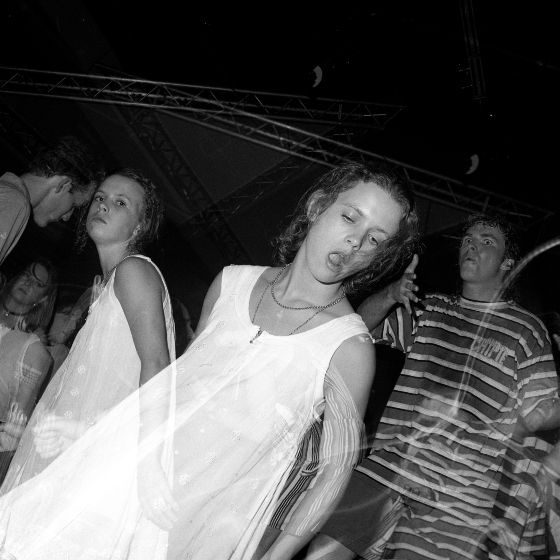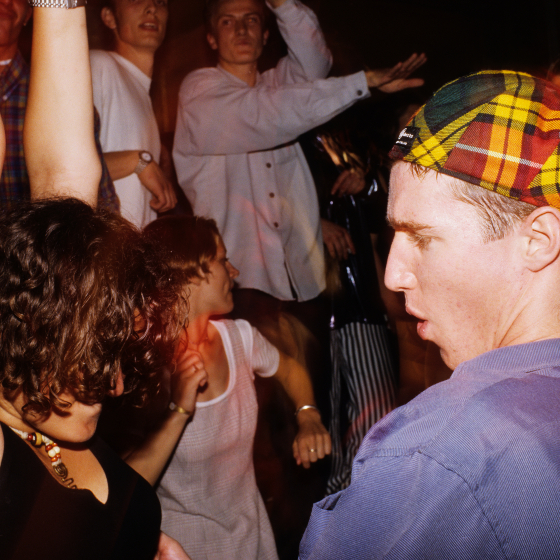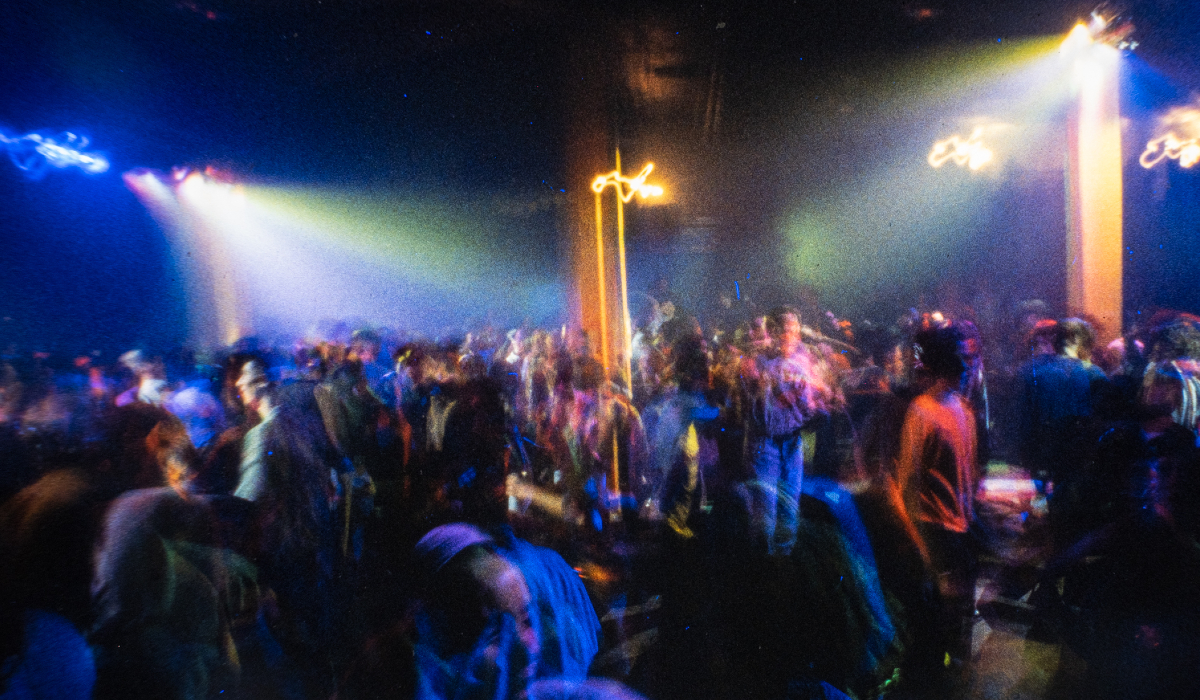CREAM DREAMS: LIVERPOOL’S ACID HOUSE AWAKENING
I started going out into town when I was around 16 and clubs then (in the early 80s) were by and large horrible, horrible places. Awful music, strict and ridiculous dress codes, and nights out in these places had a tendency to end in lager fuelled violence. Happily there were a few places that were exceptions to the rule offering refuge to music lovers like me, but that’s a story for another time.
Thankfully everything changed in club culture with the emergence of house music in the late 80s. Clubbing became a joyous experience rather than one where the music was cheesy and you always had to be on your guard against ‘end of the night’ thuggery.
Liverpool was a bit slower on the uptake than some other places but in the true style of our city when we went for it we went for it big time. I was writing for NME by this time in the late 80s and was immediately taken by the acid house revolution. Many of my colleagues at NME thought acid house was a fad that would be gone in 12 months’ time and ‘proper’ music would retake its rightful place centre stage. The fact that I ‘got it’ and was quickly immersed in this movement meant that I was in a great position to witness the early developments and write about it for publications such as ID, The Face, and Mixmag (one of the publications that emerged from the new scene).

Early movers in Liverpool were nights like Daisy at the gorgeous building that was ‘The State’ and ‘8 Orgasms’ which took over the much missed ‘Macmilans’ for a short run and included an early appearance by A Guy Called Gerald (responsible for the classic ‘Voodoo Ray’ track).
The ones that meant most to me in these early days were ‘The Underground’ (at the tunnel end of Victoria St) which was, for its short existence in 89/90, one of the best known clubs in the country. I spent a lot of time in this small basement den which was run with passion by a team that included John Kelly and James Barton (who had been involved in Daisy) as residents. It was wild, loads of fun and always destined to have a short but glorious lifespan. I wrote a review of ‘The Underground’ in NME, which in hindsight was maybe the first time that a club got its own review in those hallowed rock pages.

‘G Love’ was another night that is still spoken about with reverence by all us old time clubbers. The brainchild of Peter Coyle and the 8 team, ‘G Love’ was a once a month night in the brilliant space that was the Mardi (just off Bold St). Residents were Nick Warren and local lad John Kelly who both knew how to bring the party. It was for all sorts of reasons a perfect night and I had mates that came up from London every month for this celebration of good music and good people. ‘G Love’ eventually became too big for the Mardi and moved for a short time over to ‘Nation’ where it was rebranded as ‘Deep and Devastating’
The next place to really take off and get a national reputation was ‘Quadrant Park’ which quickly became a big name in UK clubland and one of the first places I’m aware of that hosted all nighters. Some familiar names cropped up here too in the shape of the DJ team of James Barton, Andy Carroll, Mike Knowler and John Kelly. One of the mad things about the Quad was that it wasn’t city centre based but was in fact a dirty big old warehouse in Bootle. I’m from Bootle and was living in a flat there at the time which was about 10 mins walk from the club. This was convenient for me and also hilarious as I was able to witness confused clubbers warily making their way into Bootle on the way to the Quad. The same people looked even more confused in the early hours of the morning after a night of excess and dancing, wondering how on earth they were going to escape from this scary industrial wasteland. Like many clubs, ‘The Quad’ was a wonderful experience in the early days with a few thousand like minded people coming together, but sadly it turned ugly pretty quickly and its closure was no great loss.
James Barton and Andy Carroll moved onto the brand new ‘051 club’ around 1990 but it was a bit later when that venue really took off with the boom of ‘scouse house’. To be honest it was never my favourite place as I always preferred smaller, ‘dirtier’ places’ but it’s good to see it open and operating as a club once again now.
James Barton and Andy Carroll transferred from ‘The 051’ to begin a new Saturday night at ‘Nation’. That night was called ‘Cream’ and the rest, as they say, is history. ‘Cream’ grew quickly, supported by slick marketing, word of mouth and the astute choice of guest DJs alongside the regulars.

Why was ‘Cream’ so successful? It’s always difficult to say why something took off but house music had really moved into the mainstream by this time with a much bigger potential audience and suddenly the age of the ‘superclubs’ like ‘Cream’ was on us… James Bartonm, as he has proved time and time again, understood what punters wanted and was a great promoter/entrepreneur. ‘Cream’ was also born in Liverpool and the availability of the massive warehouse that was ‘Nation’ meant they were in the prefect city at the perfect time in a building that could cope with a huge demand. ‘Cream’ became one of the biggest club brands in the world and it’s still thriving, particularly through their ‘Creamfields’ festivals. At its height in the days of the Paul Oakenfold residency, ‘Cream’ was the club that everyone wanted to be at. The impact of ‘Cream’ was such that it was said that thousands of students chose to study at Liverpool purely because they wanted to be able to go to ‘Cream’. In fact one of my nieces went for a uni interview at Aberystwyth around this time and one of their selling points was that there was a coach every Saturday taking students to ‘Cream’!
Despite being a global brand, ‘Cream’ has always been of the city that gave birth to it. We should be proud of this and celebrate it. Still going strong and based in Liverpool still, ‘Cream’ is now headed up by Scott Barton.

I loved the ‘Cream’ nights when Oakenfold was at his best but again my preference was for something much more intimate. I found that at a night called ‘Voodoo’ which took place at ‘Le Bateau’, just a short walk from ‘Nation’ on Duke St. The night was the brainchild of the late and much missed Sam Jones and Claire Coombes. Sam had earlier form with a brilliant night called ‘Smile’ which brought big name DJs to play in a small club that is now ‘The Zanzibar’. ‘Voodoo’ felt special every week, helped by the small, sweaty nature of the venue, great residents like ‘Ste Shiels’ and ‘Vertigo’ and guests of the calibre of ‘Darren Emerson’ and ‘Green Velvet’. These were some of my favourite ever night’s and if you meet anyone who ever went there they will say the same thing. The club eventually moved over to ‘Sunrise’ (above the 051) and while it was still brilliant it never quite reclaimed the magic of ‘Le Bateau’.
The last big club nights I went to with any sort of regularity were the ‘Chibuku’ nights which started in the late 90s/early 2000s and I think began above ‘The Black Horse’ on Berry St. I remember it best from the night’s at ‘The Masque’ (now the Arts club) and the particular night the legend, John Peel played.
I don’t go out to clubs anywhere near as much now but I know we have a thriving, dynamic and notably more diverse scene than the one I have written about here.
If you are into electronic music then you can’t help but have a great night if you come to Liverpool. Just look at the talent we have here with established names like ‘Sosa’, ‘Yousef’, ‘Lauren Lo Sung’, ‘Girls Don’t Sync’, ‘Sonic Yootha’, ‘Craig Charles’ and many more! As well as loads of up and coming talent. But beyond that I think it is simply down to the fact that we want to party more than anywhere else. A night out in Liverpool is special and if you have great music and like-minded people then it just doesn’t get any better.
Disclaimer: This is a personal memoir and is in no way meant to be a comprehensive account. It doesn’t for example cover clubs on the Wirral or gay clubs. Any inaccuracies or omissions are my fault, but in my defence I was out having fun so memories of dates and personnel are understandably blurry.
Written by Kevin McManus




